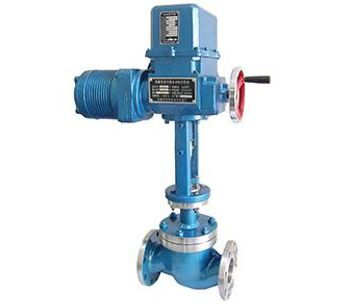How to Prevent and Address Electric Control Valve Leakage
In modern industrial control systems, electric control valves serve as crucial components responsible for regulating the flow, pressure, and temperature of various media. However, valve leakage not only impacts system efficiency but also poses potential safety hazards. Therefore, understanding and addressing the leakage issues of electric control valves is essential to ensure the stability and safety of industrial systems. This article will discuss several effective solutions to help companies prevent and handle electric control valve leakage problems during routine operations.
1. Regular Maintenance and Inspection
Regular maintenance and inspection are fundamental to preventing and resolving leakage issues. Establishing a comprehensive maintenance management system is key, including:
- Periodic Performance Checks: Regularly inspect all valve components to ensure they are in good condition. Pay special attention to critical parts such as the valve stem, valve seat, and seals.
- Cleaning Dirt and Debris: Periodically clean dirt and debris from the valves to prevent them from affecting the valve's normal operation.
- Replacing Worn Parts: Timely replacement of severely worn parts is necessary to ensure the sealing performance and operational reliability of the valve.
- Recording and Tracking Maintenance: Maintain detailed maintenance records, tracking each maintenance and inspection to promptly identify and resolve potential issues.
2. Selecting Suitable Sealing Materials
The choice of sealing material directly affects the valve's sealing performance and service life. Therefore:
- Choosing Materials Based on the Working Medium: Different working media require different sealing materials. Select materials that can withstand the medium's corrosion, temperature changes, and pressure variations.
- Ensuring Material Compatibility: Ensure that the selected sealing materials are compatible with the working medium and valve body material to avoid leakage issues due to material incompatibility.
- Focusing on Material Durability: Choose highly durable materials to extend the valve's service life and reduce maintenance frequency.
3. Adjusting Tightness
The tightness between the valve stem and valve cover significantly impacts the sealing performance of electric control valves. Therefore:
- Ensuring Proper Tightness: During installation and maintenance, adjust the tightness between the valve stem and valve cover appropriately. Over-tightening can cause deformation or breakage of the valve stem, while under-tightening can lead to poor sealing and increased leakage risk.
- Regularly Checking Tightness: During routine maintenance, check the tightness between the valve stem and valve cover to ensure it remains in optimal condition.
4. Inspecting Valve Seat Surface and Seat Wear
Wear of the valve seat surface and seat is a major cause of leakage. Therefore:
- Regularly Checking Wear: During maintenance, regularly inspect the wear condition of the valve seat surface and seat.
- Timely Replacing Worn Parts: If severe wear is detected, promptly replace the valve seat surface and seat to ensure sealing performance.
- Using Wear-Resistant Materials: Choose materials with good wear resistance to reduce wear and extend service life.
5. Checking and Repairing Electrical Leakage
Electrical leakage in electric control valves can occur during use, affecting equipment performance and posing safety risks. Therefore:
- Regularly Checking Electrical Parts: Periodically inspect the electrical parts of the electric control valve to ensure there is no electrical leakage.
- Repairing Electrical Faults: If electrical leakage is detected, immediately repair the electrical faults to ensure safe operation of the equipment.
- Installing Electrical Leakage Protection Devices: Install electrical leakage protection devices on electric control valves to enhance safety.
By implementing these comprehensive measures, companies can effectively prevent and resolve electric control valve leakage issues, ensuring the stable operation and safe production of their systems. Continuous attention and maintenance are crucial to guaranteeing the reliability and efficiency of electric control valves in industrial processes.

